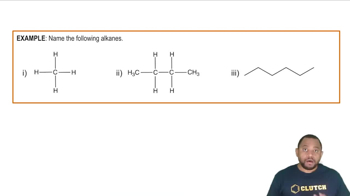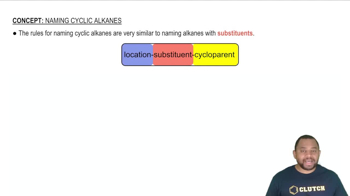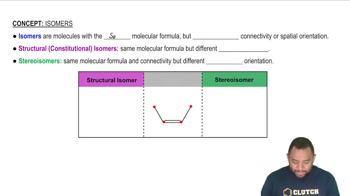Here are the essential concepts you must grasp in order to answer the question correctly.
Alkanes
Alkanes are saturated hydrocarbons consisting only of carbon (C) and hydrogen (H) atoms, with single bonds between carbon atoms. Their general formula is CnH2n+2, where 'n' represents the number of carbon atoms. This structure allows for a maximum number of hydrogen atoms, making alkanes relatively stable and unreactive compared to other hydrocarbons.
Recommended video:
Cycloalkanes
Cycloalkanes are also saturated hydrocarbons but are characterized by a ring structure formed by carbon atoms. Their general formula is CnH2n, which indicates that they have two fewer hydrogen atoms than their straight-chain counterparts due to the formation of the ring. This difference in structure affects their physical and chemical properties, such as boiling points and reactivity.
Recommended video:
Rules for Naming Cyclic Alkanes
Structural Isomers
Structural isomers are compounds that have the same molecular formula but differ in the arrangement of atoms. In the case of alkanes and cycloalkanes, both can have the same number of carbon atoms, yet their distinct structures lead to different chemical formulas and properties. Understanding structural isomerism is crucial for distinguishing between these two classes of hydrocarbons.
Recommended video:
 Verified step by step guidance
Verified step by step guidance

